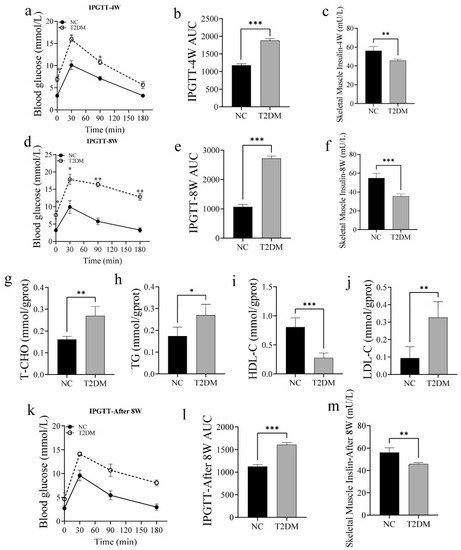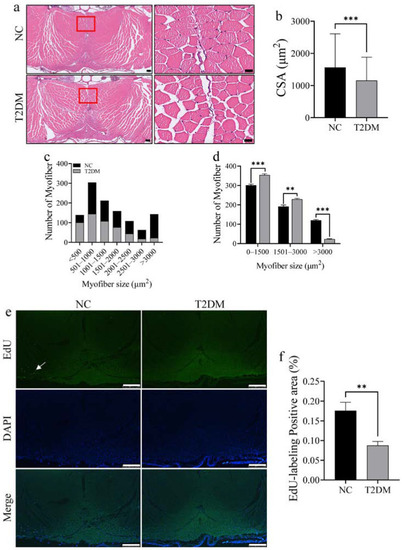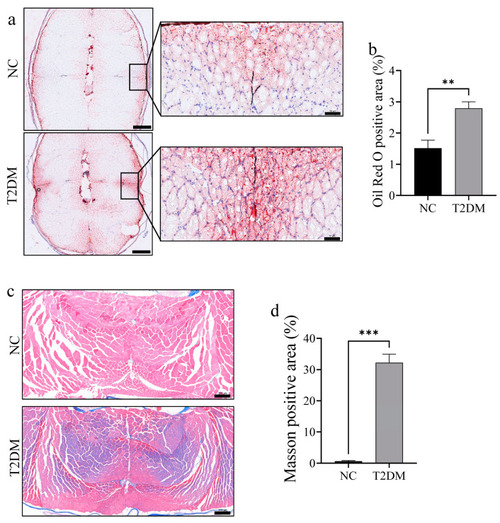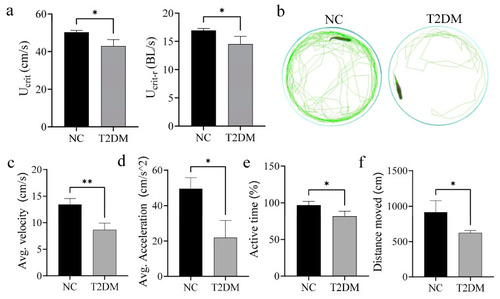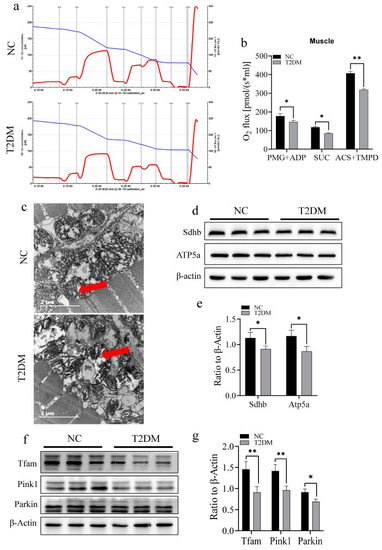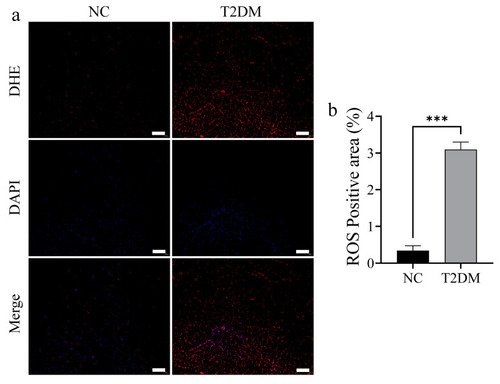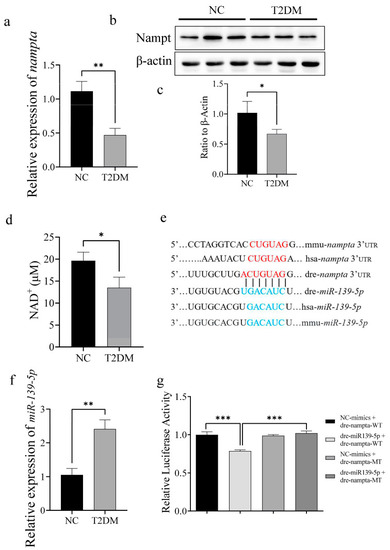- Title
-
Type 2 Diabetes Induces Mitochondrial Dysfunction in Zebrafish Skeletal Muscle Leading to Diabetic Myopathy via the miR-139-5p/NAMPT Pathway
- Authors
- Chen, Z., Zhou, Z., Deng, Q., Zou, Y., Wang, B., Huang, S., Tian, J., Zheng, L., Peng, X., Tang, C.
- Source
- Full text @ Int. J. Mol. Sci.
|
High-glucose treatment resulted in the generation of a zebrafish model of type 2 diabetes mellitus (T2DM). ( |
|
Skeletal muscle mass loss in zebrafish with type 2 diabetes mellitus (T2DM). ( |
|
Lipid accumulation and fibrosis were significantly enhanced in the skeletal muscle of zebrafish with type 2 diabetes mellitus (T2DM). ( |
|
Type 2 diabetes mellitus (T2DM) impairs the motor ability of zebrafish. ( |
|
Type 2 diabetes mellitus (T2DM) causes mitochondrial dysfunction in the skeletal muscle of zebrafish. ( |
|
Type 2 diabetes mellitus (T2DM) induces inflammatory response in skeletal muscle. ( |
|
Type 2 diabetes mellitus (T2DM) inhibits NAMPT expression by upregulating miR-139a-5p. ( |

